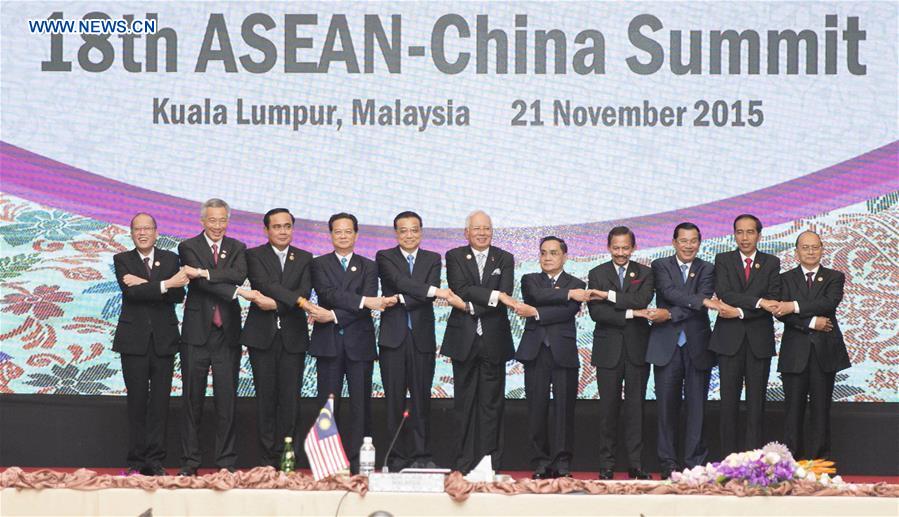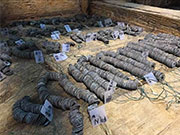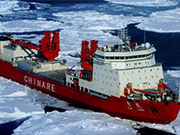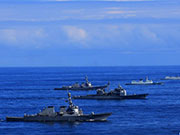

 |
| Chinese Premier Li Keqiang (5th L) poses for a group photo with ASEAN members' leaders during the 18th ASEAN-China summit in Kuala Lumpur, Malaysia, Nov. 21, 2015. (Xinhua/Huang Jingwen) |
BEIJING, Nov. 20 -- Chinese Premier Li Keqiang's ongoing visit to Malaysia, during which he will attend the East Asian leaders' meetings, comes at a time when China and other East Asian countries are beefing up efforts to deepen economic integration.
One of the highlights in Kuala Lumpur is the Regional Comprehensive Economic Partnership (RCEP), a proposed collective free trade agreement (FTA) between the 10 member states of the Association of Southeast Asian Nations (ASEAN) and six countries with which ASEAN has individual FTAs: Australia, China, India, Japan, New Zealand and South Korea.
The RCEP deal is entering its final stage after three years of negotiations, and, if achieved, will be a catalyst for regional economic integration.
COMMON GOAL
Given the fact that the would-be signatories of the RCEP have a total population of approximately 3 billion and constitute one-third of global gross domestic product, it has become a goal that all negotiating parties have been striving for.
China's cooperation with ASEAN, which can be traced back to 1991 when the two sides set up the dialogue, has been serving as a driving force to lead the progress of RCEP negotiations.
Following what has been hailed as the "golden decade" of China-ASEAN relations since the two sides forged a strategic partnership in 2003, Beijing proposed a China-ASEAN community of common destiny in 2013.
In the same year, Premier Li called on the two sides to further create a "diamond decade" of bilateral ties under what he called a "2+7 cooperation framework."
The "2" refers to consensus on deepening strategic mutual trust and focusing on economic development, while the "7" refers to seven areas of cooperation covering politics, trade, inter-connectivity, finance, maritime cooperation, security and people-to-people exchanges.
To Jiang Ruiping, vice president of China Foreign Affairs University, the China-ASEAN FTA, which came into effect on Jan. 1, 2010 and is now nearing the end of a negotiation process to have it upgraded, has led to countries like Japan, South Korea, India and Australia signing their individual FTAs with ASEAN, laying the foundation for the RCEP.
Gao Yan, Vice Minister of the Ministry of Commerce, told a press briefing in Beijing on Tuesday that China has been "a firm supporter and promoter" of the RCEP, hoping that the negotiations maintain their impetus so as to conclude as soon as possible.
According to Gao, the RCEP negotiations have already made substantial progress, and China, together with ASEAN countries, is seeking to finalize the deal in 2016.
Gao said that the RCEP negotiations have already had 10 rounds of talks plus four rounds of ministerial-level meetings, and that an early finalization will significantly boost all parties' confidence.
On Tuesday in Manila, Malaysian Prime Minister Najib Razak told Chinese President Xi Jinping that the RCEP should be agreed on as soon as possible.
Sanchita Basu Das, an economics researcher at the ASEAN Studies Center of Singapore's Institute of South East Asian Studies, in a recent interview with Xinhua, called for intra-ASEAN consensus to safeguard the inking of the RCEP deal.
"If ASEAN members can integrate within themselves, they can take leadership role in RCEP negotiation and hence can maintain its centrality in regional trading architecture," he said.
CATALYST FOR INTEGRATION
Seeing the potential for further growth, ASEAN leaders in 2007 adopted a blueprint envisioning an ASEAN Economic Community (AEC), which, after eight years, is expected to take shape by the end of this year, thus becoming the first sub-regional community in Asia.
In this context, the RCEP, an integrating framework to further facilitate China's trade with ASEAN members and beyond, will serve as a catalyst in accelerating the formation of the AEC.
The RCEP, which builds upon several existing FTAs between ASEAN and individual countries, will further integrate East Asian countries and lead to common prosperity in a future AEC.
Professor Emeritus Gary Hawke at New Zealand's Victoria University and a member of the Academic Advisory Council of the Jakarta-based Economic Research Institute for ASEAN and East Asia views the RCEP as essentially a move to the AEC.
"It takes what's likely to emerge out of the AEC ... and it draws on all the existing ASEAN-plus-one FTAs and thinks about how these could be further developed," Hawke said.
Bilateral trade between China and ASEAN countries reached 397.2 billion U.S. dollars in the first 10 months of 2015, while 14.3 percent of China's overseas investment went to ASEAN countries by the end of 2014, making China-ASEAN economic and trade cooperation the most substantial and fruitful in East Asia, said Gao.
Gao's pledge that China will continue to aid underdeveloped countries in the region seems to have echoed the concern of analysts, who said the AEC and RCEP also offer a testing ground for economic cooperation among ASEAN countries -- particularly the underdeveloped members.
Day|Week

 118-meter-high Never-used Building in NW. China Demolished
118-meter-high Never-used Building in NW. China Demolished J-10B fighters with homegrown engine in test flight
J-10B fighters with homegrown engine in test flight 10 tons of copper coins unearthed in 2,000 years old ancient tomb
10 tons of copper coins unearthed in 2,000 years old ancient tomb Beautiful graduate from police college becomes Internet hit
Beautiful graduate from police college becomes Internet hit Photos of U.S. Navy intruding in South China Sea released
Photos of U.S. Navy intruding in South China Sea released What is inside China's icebreaker ‘Xuelong’?
What is inside China's icebreaker ‘Xuelong’? Chinese, U.S. navies hold first-ever joint exercise in the Atlantic
Chinese, U.S. navies hold first-ever joint exercise in the Atlantic In pics: skies of glory
In pics: skies of glory J-10, J-11, Sukhoi Su-30 fighters vs. HQ-9 anti-aircraft missile system
J-10, J-11, Sukhoi Su-30 fighters vs. HQ-9 anti-aircraft missile system Russian plane crash victims sucked out of seats as 'external impact' blew jet apart
Russian plane crash victims sucked out of seats as 'external impact' blew jet apart